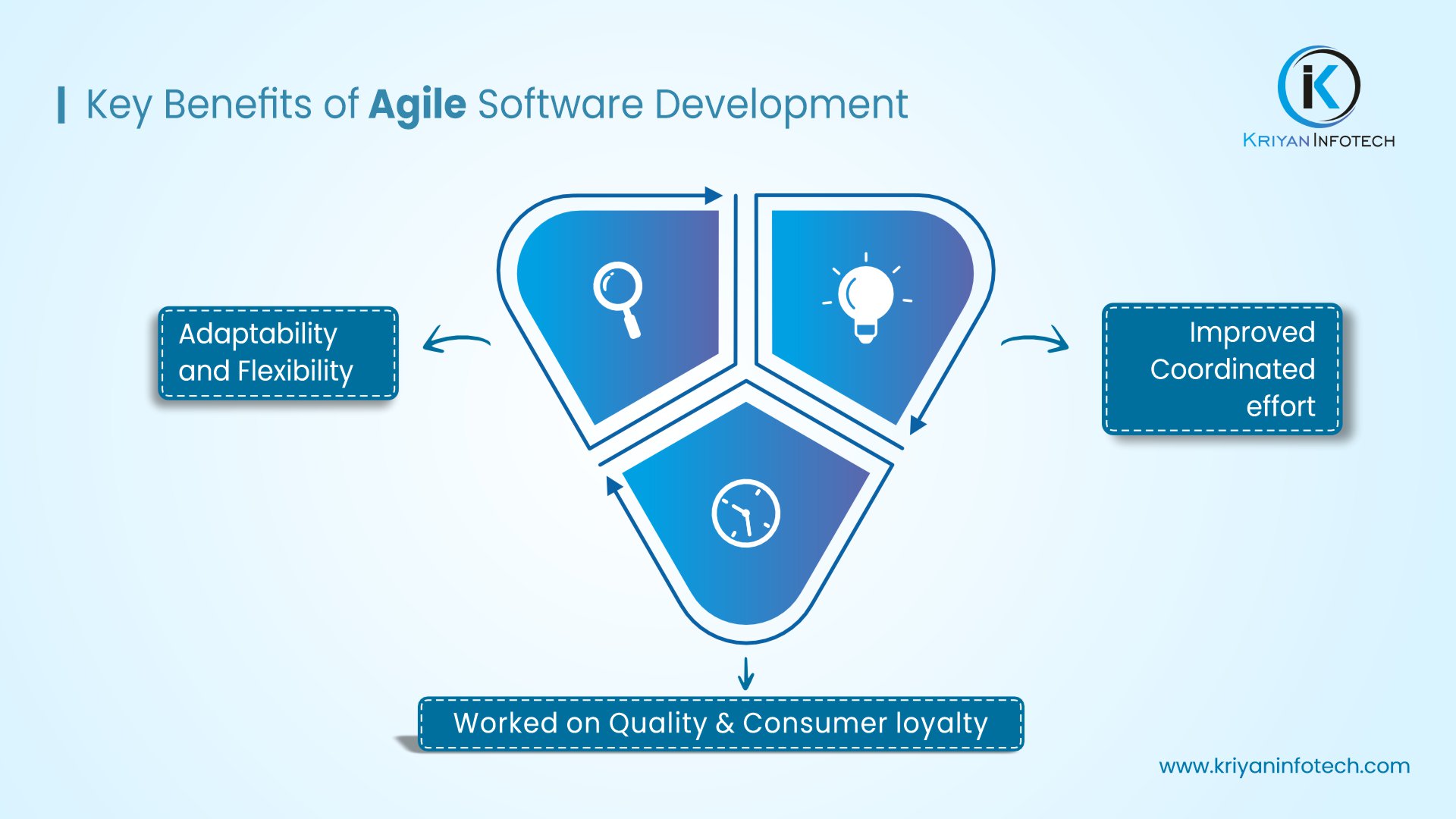
Top Key Benefits & Stages of Agile Software Development Methodology
Introduction
In today’s fast-paced technological landscape, programming advancement projects face various difficulties. Traditional waterfall methodologies frequently battle to stay aware of changing necessities and market demands. But we have a solution for that: Agile Software Development. By adopting an agile software development methodology, teams can embrace feasibility, customization, and cooperation to steadily convey value. In this blog, we will discuss agile software development and its groundbreaking effect on your business.
What is Agile Software Development?
Basically, agile software development refers to the state of mind and set of technical fundamentals that focus on client-coordinated effort, versatile preparation, iterative, and high-quality software products efficiently. It empowers software development teams to respond rapidly to changing prerequisites and deliver excellent programming software products in an effective manner. By embracing techniques like Scrum, Kanban, or XP, advancement software development teams can boost their efficiency, encourage collaboration, enhance customer satisfaction and boost the customer/client retention ratio.
Key Benefits of Agile Software Development
Technically agile software development methodology has vast terminology which can be implemented to any particular project based on the suitable principles of the agile software development methodology. However, let us explore its benefits after its implementation below.

1. Adaptability and Flexibility
Agile methodologies engage teams to adjust to changing necessities and market elements. Short advancement cycles, known as runs, take into account iterative turn of events and successive input circles. This adaptability guarantees that the eventual outcome intently lines up with client assumptions and arising patterns.
2. Improved Coordinated effort
Agile software development encourages a cooperative climate by underscoring cross-practical groups and constant correspondence. Designers, partners, and clients work intently together all through the undertaking, empowering better figuring out, straightforwardness, and quicker independent direction.
3. Worked on Quality and Consumer loyalty
Agile approaches focus on conveying gradual worth to clients’ tailored requirements. Normal testing, nonstop combination, and successive deliveries empower teams to distinguish and resolve issues quickly, bringing about higher item quality. The iterative idea of agile software developments guarantees that client input is integrated with the meantime, prompting expanded consumer loyalty.
Agile Software Development Process
This process plays a significant role at enhancing the life cycle of agile software development methodology. Therefore, let us explore the process of agile software development below.
The agile software development process comprises a few key parts that empower productive and iterative turn of events which are mentioned below:
1. Client Stories and Excess Administration
Client stories characterize necessities according to a client’s point of view and act as the structure blocks of light-footed development. An overabundance of the executives’ methods, like prioritization and assessment, guarantees that the most important elements are conveyed first.
2. Iterative Turn of events and Runs
Agile development includes separating the venture into short advancement cycles called runs. Each run centres around conveying a particular arrangement of highlights, trailed by a survey and review to assemble input and ceaselessly work on the cycle.
3. Agile Instruments and Practices
Conquering Difficulties in Agile Approach
1. Social Shift and Change The board
Progressing to an agile outlook might confront opposition from colleagues acquainted with conventional approaches. Viable changes in the executives’ procedures, like preparation, instructing, and open correspondence, assist with exploring this social shift effectively.
2. Disseminated and Remote Groups
With the ascent of remote work, coordinated individuals/teams frequently regard themselves as geologically scattered. Joint effort and specialized devices, alongside virtual undertaking the board rehearses, assume a fundamental part in overcoming any barrier and empowering consistent coordination.
Conclusion
Coordinated programming advancement has upset how ventures are executed, cultivating versatility, joint effort, and further developed item quality. By embracing coordinated standards and strategies, improvement groups can explore the difficulties of a quickly changing business sector and convey programming that meets client requirements. In a time where agility is key to success, adopting agile practices becomes a strategic imperative for organizations striving to innovate and thrive.
FAQs
The agile development methodology offers several benefits, including:
Adaptability: Agile development considers versatility and changes all through the advancement interaction.
Quicker Time to Market: It stresses more limited advancement cycles, conveying working programming sooner.
Expanded Consumer Loyalty: Normal input and inclusion of partners lead to better arrangement with client needs.
Worked on Quality: Iterative testing and consistent integration help recognize and resolve issues right off the bat.
Improved Coordinated effort: Agile Development advances cooperation, correspondence, and coordinated effort among teams.
One popular tool used in agile software development is Jira. It is a widely used tool for project management and issue tracking tool that encourages agile practices.
Agile in software development is an iterative and incremental approach that focuses on delivering value to customers through frequent releases of working software. It emphasizes adaptability, collaboration, and customer involvement throughout the development process. Agile methodologies, such as Scrum and Kanban, prioritize flexibility, responsiveness to change, and continuous improvement.
Agile in software development is an iterative and gradual methodology that emphasizes on conveying value to clients through continuous releases of working software. It encourages flexibility, coordinated effort, and client involvement throughout the development process. Agile approaches, like Scrum and Kanban, focus on adaptability, responsiveness to change, and constant improvement.
The 5 stages of agile development typically include:
Project Initiation: Defining project goals, objectives, and requirements.
Planning and Design: Creating a roadmap, defining user stories, and planning iterations.
Development: Iterative development and testing of software features.
Review and Feedback: Regular reviews, demos, and gathering feedback from stakeholders.
Iteration and Continuous Improvement: Reflecting on the process, making adjustments, and continuously improving the product through subsequent iterations.
Please note that the answers may vary depending on the specific context and interpretation of agile development methodologies.
High-Performance Web Development: Frameworks & UX Best Practices
Introduction In a digital world shaped by instant...
How API Development Services Can Transform Your Business Systems
Introduction API (Application Programming Interface) Development Services have...
Why WordPress Development Services Are Ideal for Businesses in 2025
Introduction WordPress is leading the way for businesses...



